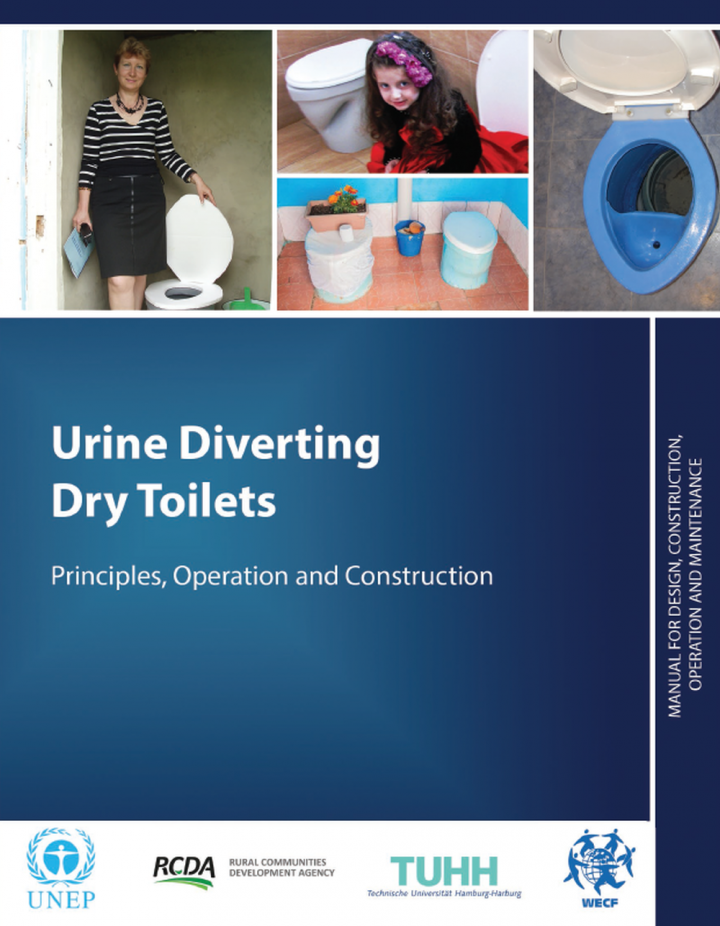Urine Diverting Dry Toilets Principles, Operation and Construction Samwel, M., Deegener, S. (2015)
All over the world many communities or houses are served by de-centralized water supplies such as standpipes, wells or springs. In many places, even if a centralized water supply system is in place, the system may be regularly interrupted and/or the sewage system may be lacking. These circumstances make the selection of a safe, comfortable and environmentally friendly waterless toilet a nice alternative for many households and communities.
Urine diverting dry toilets (UDDT) don’t pollute ground or surface water nor waste drinking water by flushing; by using these specially designed toilets, human feacal matter is diverted from urine and is sanitised and recycled in a safe way. Human fecal matter and urine are considered a valuable resource which can be reused for food production or gardening. No central water supply or sewage system is needed for the proper functioning of these toilets.
The design of the toilet makes it easily adaptable to different types of communities, can be constructed with cheap and locally produced materials and can even be constructed inside the house or adjacent to the house. According to the wishes or habits of the users, UDDTs can be designed as a sitting or a squatting toilet. The design can be adapted to the needs of handicapped people as well.
Bibliographic information
Samwel, M., Deegener, S. (2015). Urine Diverting Dry Toilets Principles, Operation and Construction Women in Europe for a Common Future (WECF), 2nd revised edition
Filter / Tags
Urine diversion dehydration toilets (UDDTs) English

